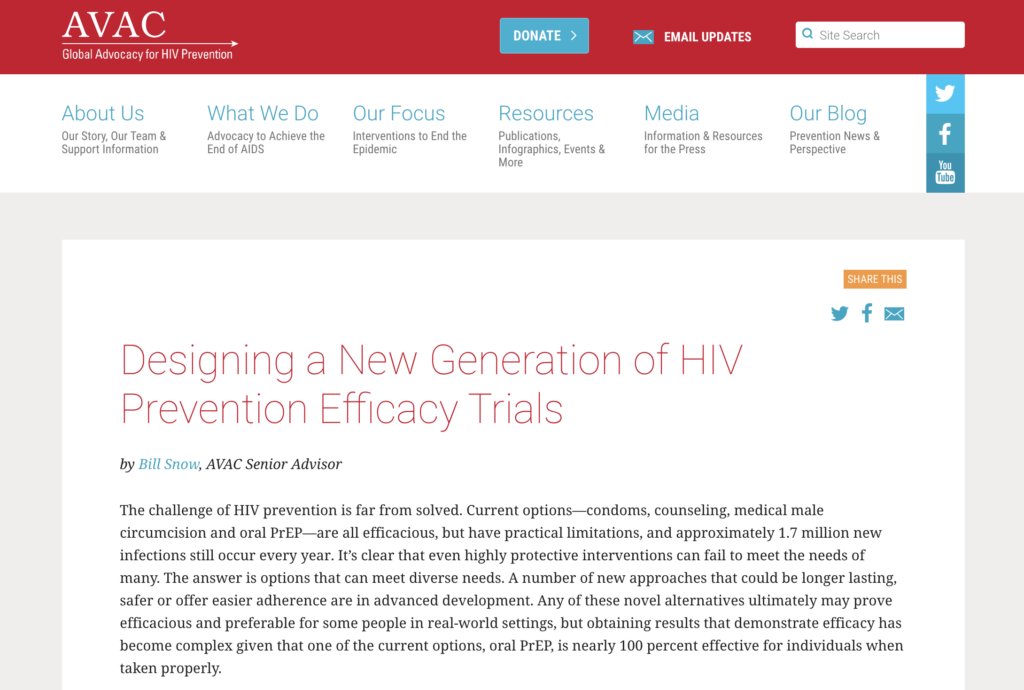Designing a New Generation of HIV Prevention Efficacy Trials

Designing trials to test new HIV prevention modalities remains crucial; high rates of new infections persist in communities all over the world. Even with effective tools becoming more accessible, it’s clear no single option fits every need. But those same options make the design of future trials increasingly complex. Bill Snow, AVAC co-founder and senior advisor, explores this issue in Designing a New Generation of Prevention Efficacy Trials. The report lays out basic concepts in innovations in trial design and an analysis of the implications for advocacy.
- Topics:
- Accelerating Product Innovation
Was this content helpful?
Tell us how we can improve the content.
Was this content helpful?
Thank you for your feedback!